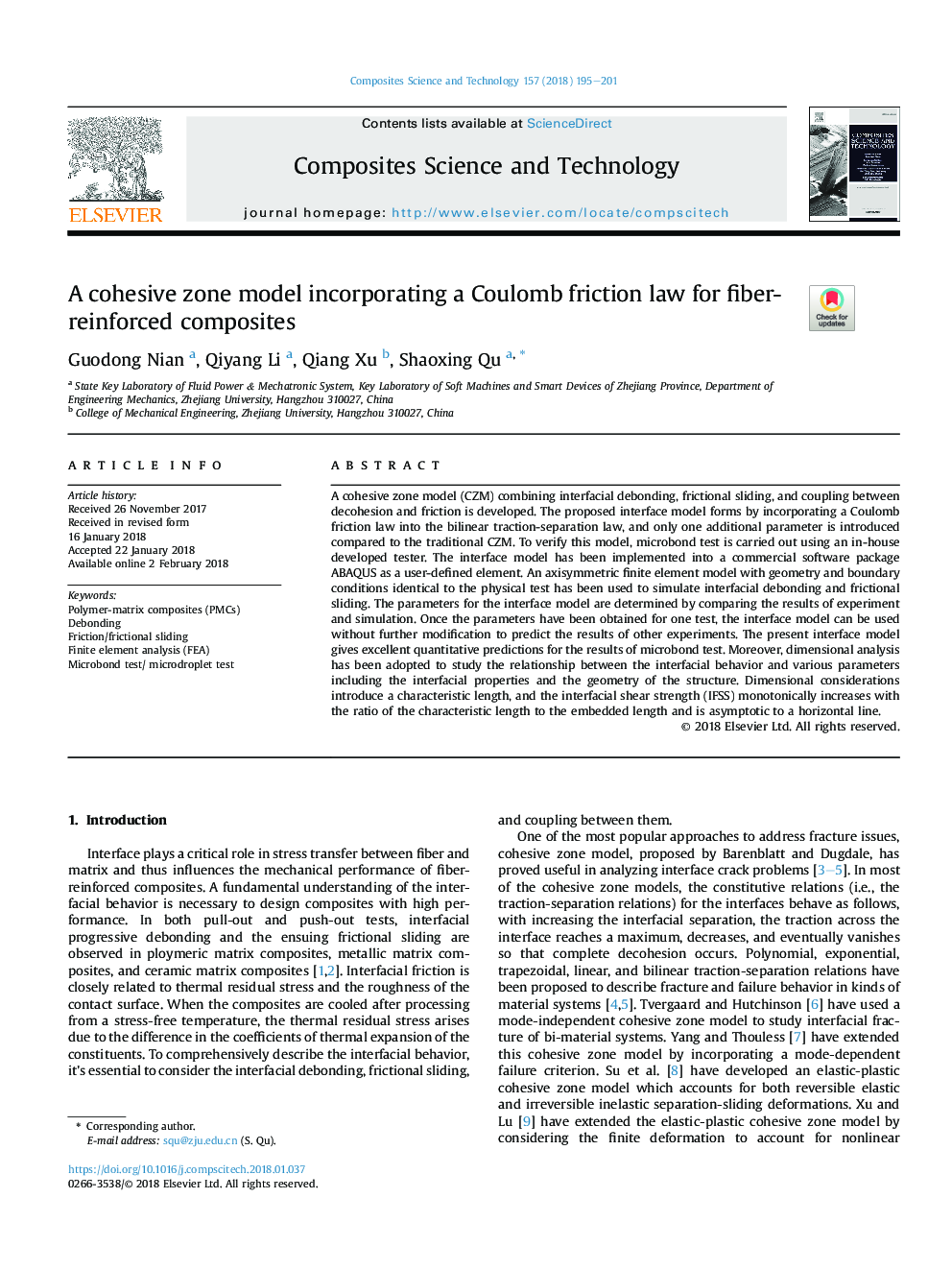| Article ID | Journal | Published Year | Pages | File Type |
|---|---|---|---|---|
| 7214690 | Composites Science and Technology | 2018 | 7 Pages |
Abstract
A cohesive zone model (CZM) combining interfacial debonding, frictional sliding, and coupling between decohesion and friction is developed. The proposed interface model forms by incorporating a Coulomb friction law into the bilinear traction-separation law, and only one additional parameter is introduced compared to the traditional CZM. To verify this model, microbond test is carried out using an in-house developed tester. The interface model has been implemented into a commercial software package ABAQUS as a user-defined element. An axisymmetric finite element model with geometry and boundary conditions identical to the physical test has been used to simulate interfacial debonding and frictional sliding. The parameters for the interface model are determined by comparing the results of experiment and simulation. Once the parameters have been obtained for one test, the interface model can be used without further modification to predict the results of other experiments. The present interface model gives excellent quantitative predictions for the results of microbond test. Moreover, dimensional analysis has been adopted to study the relationship between the interfacial behavior and various parameters including the interfacial properties and the geometry of the structure. Dimensional considerations introduce a characteristic length, and the interfacial shear strength (IFSS) monotonically increases with the ratio of the characteristic length to the embedded length and is asymptotic to a horizontal line.
Related Topics
Physical Sciences and Engineering
Engineering
Engineering (General)
Authors
Guodong Nian, Qiyang Li, Qiang Xu, Shaoxing Qu,
